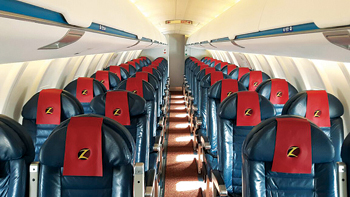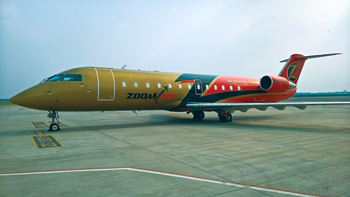INDIAN ARMED FORCES CHIEFS ON OUR RELENTLESS AND FOCUSED PUBLISHING EFFORTS

The insightful articles, inspiring narrations and analytical perspectives presented by the Editorial Team, establish an alluring connect with the reader. My compliments and best wishes to SP Guide Publications.

"Over the past 60 years, the growth of SP Guide Publications has mirrored the rising stature of Indian Navy. Its well-researched and informative magazines on Defence and Aerospace sector have served to shape an educated opinion of our military personnel, policy makers and the public alike. I wish SP's Publication team continued success, fair winds and following seas in all future endeavour!"

Since, its inception in 1964, SP Guide Publications has consistently demonstrated commitment to high-quality journalism in the aerospace and defence sectors, earning a well-deserved reputation as Asia's largest media house in this domain. I wish SP Guide Publications continued success in its pursuit of excellence.
- The layered Air Defence systems that worked superbly, the key element of Operation Sindoor
- Operation Sindoor | Day 2 DGMOs Briefing
- Operation Sindoor: Resolute yet Restrained
- India's Operation Sindoor Sends a Clear Message to Terror and the World – ‘ZERO TOLERANCE’
- Japan and India set forth a defence cooperation consultancy framework, talks on tank and jet engines
Zoom Air, Planning Big to Serve Regional Sector

“While being a full-service airline, we are clear in our approach to be an airline for smaller cities”
The Indian skies is seeing it all — full-service airlines, low-cost carriers, regional airlines, non-scheduled operators and now one more — scheduled commuter airline. On November 28, Zoom Air, the first national scheduled commuter airline, was expected to take to the skies, but the Directorate General of Civil Aviation (DGCA) is yet to give the CAP 3100 (air operators certification manual). Indeed, India is zooming into a different airspace altogether, trying to tap the vast aviation market that lies across the country, through different approaches. Awaiting approval from the DGCA which is sitting over the file, the airline is said to be incurring losses with people on the bench and aircraft on the ground.
Zoom Air is making a bold pitch of tapping the underserved and unserved markets while being a premier full-service scheduled commuter airline. The idea is to cater to the travel needs of the passenger from the secondary markets to the metro markets and not like what most airlines do of moving metro passengers to the secondary markets. On the sidelines of Aero Expo 2016, held on 18-19 November in Delhi, in an exclusive interview with SP’s Aviation, Koustav Dhar, one of the three promoters and Chief Executive Officer and Managing Director of Zoom Air, explains the rationale behind the move to capture Tier-II markets with targeted approach. Koustav Dhar has over 25 years experience in aviation, hospitality, travel and tourism sectors and is the only CEO to lead an Indian scheduled airline for three times in the last one decade — MDLR Airlines, Jagson Airlines and now Zoom Air.
SP’s Aviation (SP’s): All set to go?
Koustav Dhar (Dhar): Yes, we are all set, we are all excited. We should be having the inaugural flight on November 28 if we get the CAP 3100 from the DGCA by then. See, we are the first scheduled operator to apply for a national licence after Vistara got it in 2014. Since then a lot of policy level changes have taken place and the DGCA and we have been having constant conversations to get the approvals.
SP’s: Will the inaugural flight be to Durgapur?
Dhar: The inaugural flight will be Delhi-Chandigarh-Delhi. We are going to be having eight departures a day and we will be connecting Durgapur too – it will be Delhi-Kolkata-Delhi; Delhi- Durgapur-Delhi. The first aircraft – Bombardier CRJ200 LR – has already arrived and we are excited about the aircraft which has premium 2 x 2 seating with leather upholstery. The seat pitch is 32 inches, comparable to any premium airline. We are going to literally lay down the ‘red carpet’ for our passengers. We intend to give a flying experience to the Tier-II traveller for whom coming to Terminal 3 in Delhi itself could be a different experience than going to Terminal 1D.
SP’s: For a start-up like yours, won’t operating from Terminal 3 be adding to your costs?
Dhar: It may marginally but we have got slots/space which are not being used. It works out well for us as well as GMR which runs the airport as presently the space is being unused. Since our aircraft does not use an aerobridge, we are parked where the NSOPs (non-scheduled operators) are and we will have easy access to our aircraft.
SP’s: How many aircraft do you plan to induct and in what timeline?
Dhar: We are getting our second aircraft – CRJ200 on November 25. And by end December or thereabouts our CRJ fleet should be five, all lease-cum-purchase from our lessors based in Dublin. The aircraft are 10 to 11 years old, but fresh from C Checks; engine overhaul and completely refurbished. We have entered into an agreement with Shaurya Aeronautics for maintenance.

SP’s: Could you tell us about the concept of a scheduled commuter airline?
Dhar: Typically a commuter is who sets off in the morning from one destination and returns in the evening. It is this concept we are bringing to our Tier-II travellers. Presently, if they have to go from Point A to Point B, they have to go via Point C which does not make sense at all. We will be targeting the first class train passengers for whom there will be considerable amount of savings in terms of time. While being a full-service airline, we are clear in our approach to be an airline for smaller cities. We did not want to go for wide-body aircraft, nor the jets with seat capacities of 90 to 140 as the market is not ripe for it. Our market assessments have indicated the right capacity for the right places, hence we have gone for a 50-seater aircraft. We are going to be an airline for smaller cities. The passenger growth right now from metros is between 20 and 25 per cent, whereas Tier-II and -III are witnessing growth around 18 per cent and that too mostly from the southern region. There is potential to accelerate this growth from Tier-II and -III cities.

SP’s: You are going to operate to smaller cities and yet you are not a regional player. Won’t you be losing out on the support that is being envisaged for regional players under the Regional Connectivity Scheme (RCS)?
Dhar: Yes, we can avail every bit of RCS, but we are not going to do that. We are going to be operating to 12 of the 16 airports in the RCS Annexure 1A (list of underserved airports). We will not be operating to the islands of Andaman and Nicobar and Lakshadweep. The 12 airports are Jorhat, Lilabari and Tezpur (in Assam); Jamnagar and Bhavnagar (Gujarat); Kullu (Himachal Pradesh); Shillong (Meghalaya); Agra and Allahabad (Uttar Pradesh); Gwalior (Madhya Pradesh); Pantnagar (Uttarakhand); and Durgapur (West Bengal). We do not want to be bracketed with the airfare cap as we are going to be providing premium service. We planned out business model much before the RCS which by the way is going to provide a big boost to regional players as and when they come up. Zoom Air will focus on Northern India, Central India and the North East. We can go to Mumbai as a national player, but then there is no space over there, thus Mumbai is ruled out of regional connectivity. We are looking at Kota which as an education hub has a substantial catchment area.
SP’s: Will you be going for code-sharing and also other partnerships?
Dhar: We are already in conversation with national airlines in the SAARC, barring Pakistan. Once we firm up something, we will make the announcement. Similarly, we are in discussions with Air India where we can provide last-mile connectivity. We see a lot of synergies with Air India which has Bombardier jets too.
SP’s: Tell us about your funding arrangement?
Dhar: We are three promoters and we have bought out Zexus Air and rebranded the company as Zoom Air. We have gone in for venture capital. We have got the aircraft at ‘decent’ leasing rates. I think leasing is a big challenge and one has to really negotiate hard on this. Normally, it accounts for 14 to 15 per cent of the operating cost and we have got it between 5 and 7 per cent. Fortunately for us, Bombardier has been supportive as it was keen on getting back into the Indian market which of late had seen the Embraers and the ATRs gaining ground.
SP’s: What are the challenges that you see as you roll-out soon?
Dhar: Ground handling is going to be one major challenge. The policy is that we can do self ground handling in RCS airports, but if you look at my departures from Delhi or Kolkata I will be stuck with third-party ground handling which can add to costs.
SP’s: Tell us about your revenue stream?
Dhar: About 60 per cent will be brick and mortar (travel agencies) since we will be tapping into Tier-II and -III markets and online. We have got 26 different channels for non-traditional revenues. We have got all these in place, we are just waiting to take-off!





